- KOLÁŘ, Pavel. Rehabilitation in clinical practice. Second edition. Prague: Galén, [2020]. ISBN 978-80-7492-500-9
- HALADOVÁ, Eva. Therapeutic physical education: exercises. 3rd edition, unchanged. Brno: National Centre for Nursing and Non-Medical Health Professions, 2007. ISBN 978-80-7013-460-3
- healthline.com - The Best Exercises to Target the Gluteus Medius. Healthline. Katherine Scoleri
- thephysiocompany.com - Why Our Glutes Are So Important. PhysioCompany
Exercises for the butt: complex and isolated exercises for home and the gym

Exercising the gluteal muscles has a positive effect on the health of the entire musculoskeletal system. Is it advisable to practice complex or isolated exercises? Which specific exercises to apply in the home environment or in the gym?
Article content
The shape of the buttocks is, to some extent, genetically determined. However, with appropriate exercise and diet, the buttock muscles can be strengthened, firmed or enlarged. To be effective, exercises should be chosen that focus particularly on the posterior muscle chain.
What complex and isolated exercises to choose? More information and pictures of exercises can be found in the article.
Anatomy of the gluteal muscles in a nutshell
The gluteal muscles are localized on the back outer side of the pelvis. Together with nearby joint connections and fat, they make up our buttocks. Genetically, the gluteal muscles tend to sag, so it is advisable to strengthen them regularly with proper technique.
The gluteal muscles are divided into:
- musculus gluteus maximus - large gluteal muscle
- musculus gluteus medius - the middle gluteal muscle
- musculus gluteus minimus - small gluteal muscle
gluteus maximus - large gluteal muscle
This is the largest muscle in this area. It is superficially located, so it is the easiest to engage in a certain way during exercise. Its main function is to engage (extend) the lower limb at the hip joint.
It also performs abduction and external rotation of the hip joint. Last but not least, it helps to lift the trunk of the body out of flexion.
The gluteus medius muscle
This muscle is located in some part under the large gluteal muscle. Its function is mainly to support the lower limb at the hip joint (abduction) and last but not least to help the large muscle in abduction and rotation.
The small gluteal muscle
This is the smallest muscle in size and is located deeper below the gluteus maximus. Its function is similar to that of the gluteus medius, namely to support the hip joint, assist extension (abduction) and internal rotation of the hip joint.
Interesting information in the article.
Exercises for the gluteal area
When exercising, it is important to pay attention to the correct technique and execution of the movement. It is advisable to avoid swinging and fast, uncontrolled movements. On the contrary, slower, controlled movements with sensation of the area are advisable.
For the exercise to be effective, it is advisable to engage the connection between the muscles and the mind. When the muscle contraction of the area targeted in the exercise occurs, there is an increased focus on the activation and contraction of the muscle/muscle group.
Most of the exercises for the gluteal area and posterior chain can be applied both at home and in the gym. Either with your own weight or with various exercise equipment or exercise machines.
For beginners, it is advisable to start with your own weight and gradually add weight as you progress, either in the form of resistance balls or weights (kettlebell, dumbbells, discs...).
For beginners, it is advisable to start training with a professional due to the importance of technique.
It is important to have the right exercise technique, which avoids health risks, the development of movement imbalances and increases the effectiveness of the exercise.
Complex exercises
Complex exercises are exercises that involve a large number of muscles of the whole body. Multiple body parts and muscle groups are strengthened at the same time with different types of muscle contraction.
They are important for correcting muscle imbalances. It is not advisable to apply isolated exercises and strengthen only one muscle group while the opposite muscle group weakens.
This can lead to muscular imbalances, functional and aesthetic imbalances or functional musculoskeletal disorders themselves.
Squats, deadlifts and lunges are particularly useful as part of complex lower limb exercises with a focus on the gluteal region.
Deadlifts
- For this exercise, you will need a long resistance band, a large dumbbell or two one-handed dumbbells (discs). Stand with your feet hip-width apart and keep your back in a straight, upright position throughout the exercise. Keep your knee joints gently relaxed - unblocked.
- Grasp the weights in your hands and with a breath, slowly, with a straight, firm back, bend forward. Smoothly lower yourself with the weights to about mid-calf. There is a bending forward and a simultaneous backward movement of the buttocks. In this downward position, some stretching of the back of the muscles of the lower limbs can be felt.
- Then, from the down position with an exhalation, straighten backwards, contract and activate the gluteal muscles as much as possible.
Faults: arched back, relaxed abdominal wall, excessive activation of the lower spine, minimal activation of the gluteal muscles and posterior chain of the lower limbs.
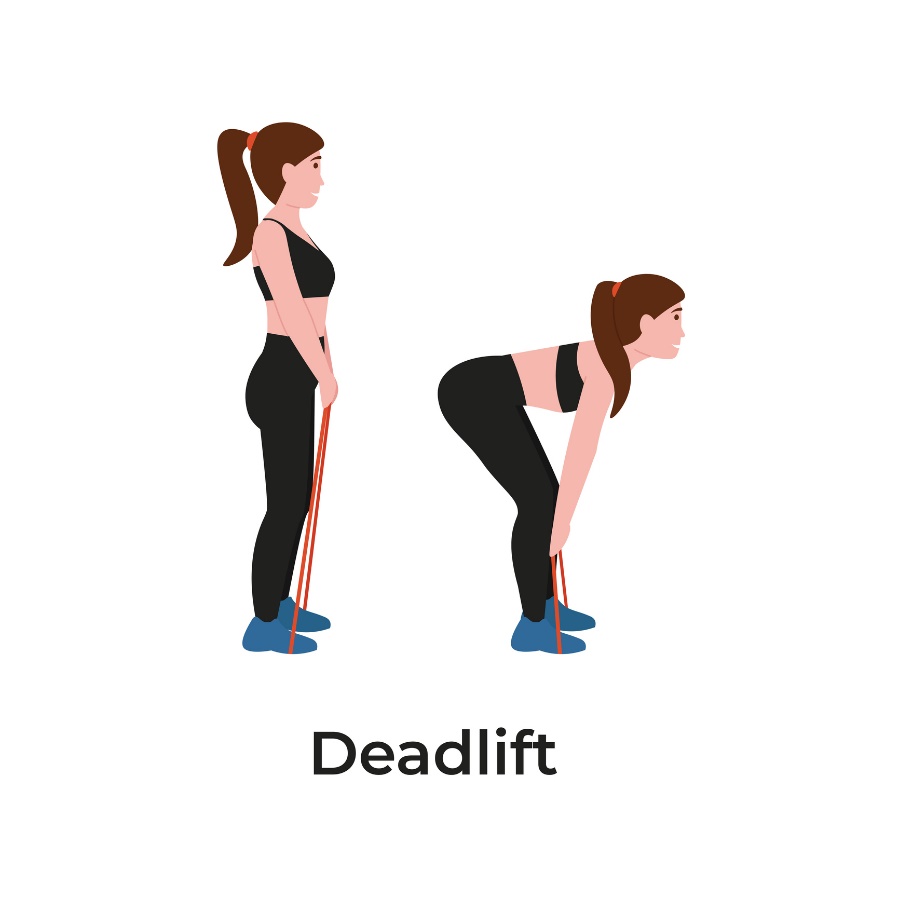
Wide squat
- This exercise can be performed with your own weight, a resistance band, kettlebell, weights, or dumbbell. A wider and deeper squat is preferable for more effective gluteal muscle engagement. A sumo squat with toes turned out is in turn good for the inner thighs and gluteal muscles.
- The back is straight throughout the movement. The feet are slightly further apart than hip-width apart. The knees are facing forward. The upper limbs may be held in front of the chest for greater stability.
- To better engage the gluteal muscles, do not take your heels off the mat during the exercise.
- With an inhale, follow with a smooth downward movement into a squat with a bend in the knee joints. The knees should not go too extremely over the toes. Then, from the lower position with an exhale, return to the original upper position with the glute muscles activated and contracting.
Faults: arched back, loose abdominal wall, unstable knees.
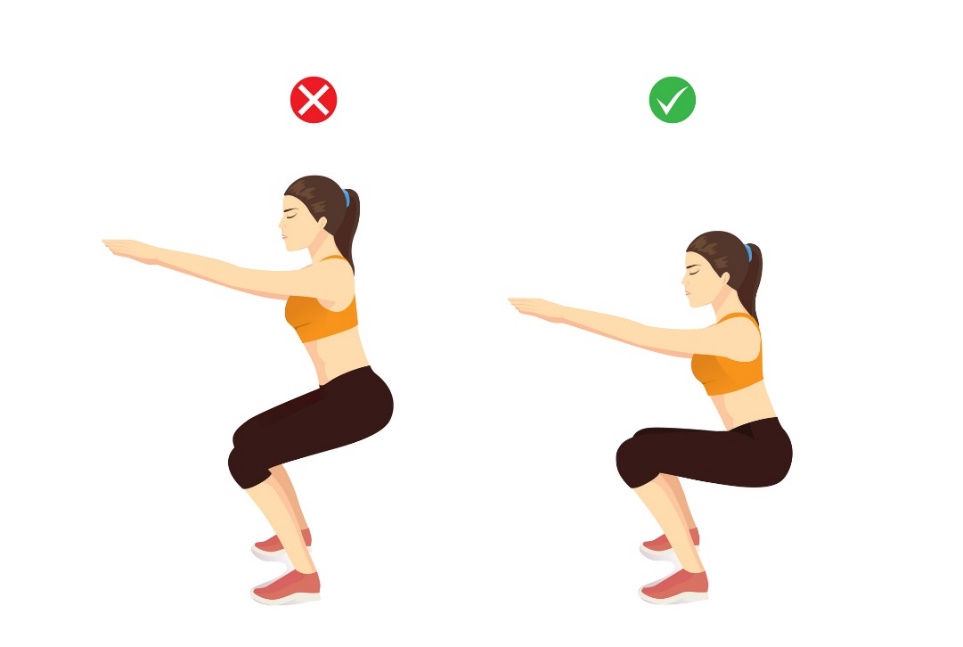
Lunges
- The lunge is a more demanding exercise for overall body stability and execution of the movement itself. Lunges can be performed with your own weight, with weights, dumbbells and on one leg with support.
- The starting position is an upright standing position. One of the lower limbs steps forward, bends the knee and hip joints and gets into a horizontal position. The knee should not extend too extremely through the tip of the stepped leg.
- For better stability, it is advisable to keep the upper limbs in front of the chest.
- Inhale as you step out and exhale as you return. Returning to the top position activates the muscles of the lower limbs and strengthens the entire gluteal musculature.
Faults: instability of the body and knee joints, not activating the gluteal muscles.
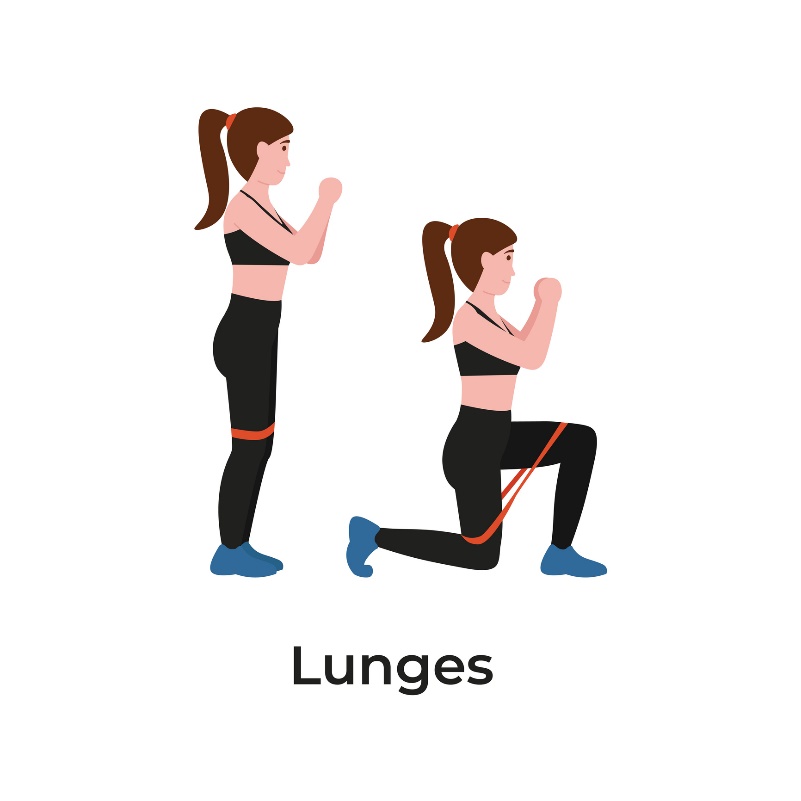
Isolated exercises
Isolated exercises are used when focusing on strengthening one area or one muscle group. These are less complex exercises that primarily activate only the muscles of a specific area.
Isolated exercises are also used for muscle imbalances where one muscle group is overloaded and another is weak and needs to be strengthened.
Often, isolated glute exercises are used to better engage the glutes, which was not sufficient in previous complex exercises.
Some of the most commonly used exercises within glute exercises include the straddle, plunge, glute bridge or hip-thrust.
Stumbling
- Stumbling should not be missed when strengthening the hamstrings and gluteal muscles. With proper technique, effective isolated activation of the gluteal muscles occurs. The basic position is on all fours, with a straight back not flexed at the lumbar spine. A firm abdominal wall, shoulders away from the ears and hip joints at pelvic width.
- With an exhalation, lift one leg bent at the knee towards the ceiling. Pull the foot by the heel, not the toe. Activate and contract the gluteal muscles as you move upwards. The movement is slow and fluid.
- The exhalation accompanies the upward movement of the leg and the inhalation accompanies the downward movement of the leg towards the mat.
Faults: excessive flexion in the lumbar spine, swing movement.

Bridge
- This exercise is one of the most commonly used exercises for isolated strengthening of the gluteal region. It can be practiced with self weight, resistance bands and weights in front of the pelvis.
- The basic position is supine on a comfortable mat. The knee joints are bent, feet resting on the mat. There is no space between the spine and the mat. The knees are level with the width of the hip joints. The arms are placed loosely along the body, palms down.
- During the exercise, the pelvis gradually rises upwards towards the ceiling. The shoulder blades remain supported throughout the exercise. Towards the top position of the bridge, the muscles are activated and the shoulder blades contract.
- Stay in the upper position for a few seconds. With an exhalation, lower the mat again and release the activated muscles.
Mistakes: not activating the gluteal muscles, excessive flexion in the hips.
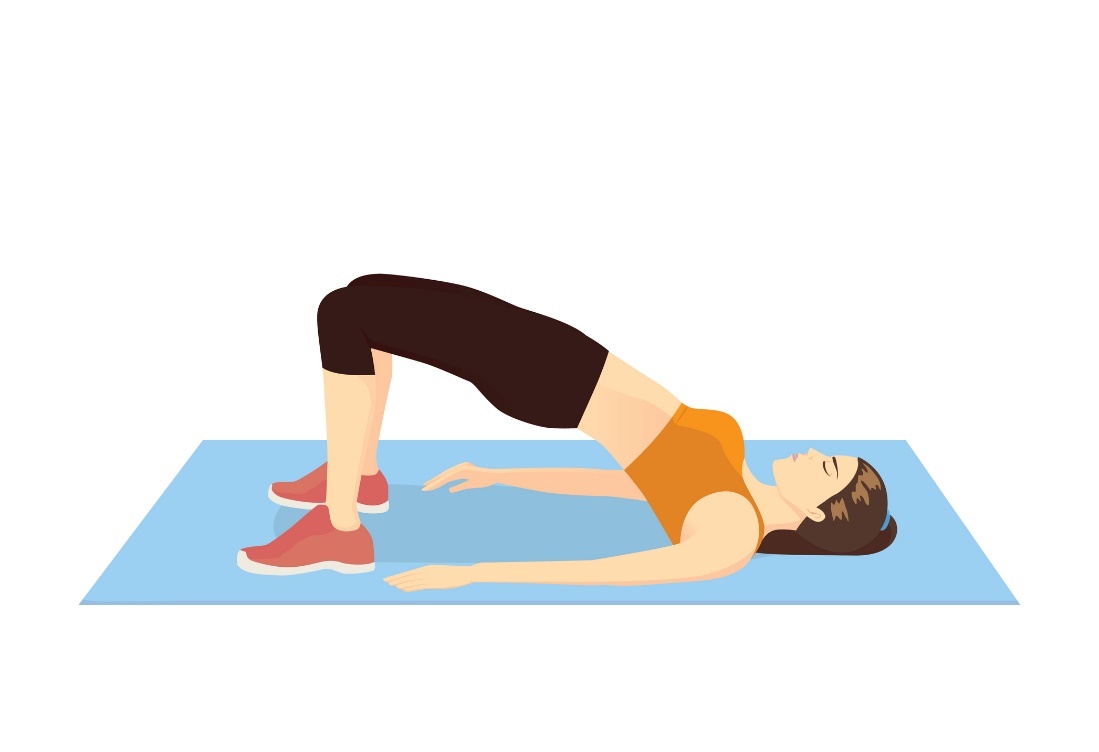
Raising the pelvis (Hip thrust)
- The hip-thrust is an isolated exercise designed primarily for the gluteal muscles. It is usually performed with a weight on the front surface of the hip bone of the pelvis (dumbbells, discus, bag...).
- Sit with your back to a bench and lean on it with the bottom of your shoulder blades. Place the weight over the pubic bone and brace yourself firmly with your entire foot. The distance between your knees should be approximately the width of your pelvis.
- The starting position is based on lowering the pelvis towards the mat and the top position, on the other hand, consists of raising the pelvis to a horizontal position.
- With an exhalation and contraction of the gluteal muscles, lift the weight with the pelvis towards the ceiling. Do not overstretch the back muscles when lifting.
Faults: excessive activation of the back, unstable back and abdominal wall, non-activation of the gluteal muscles.
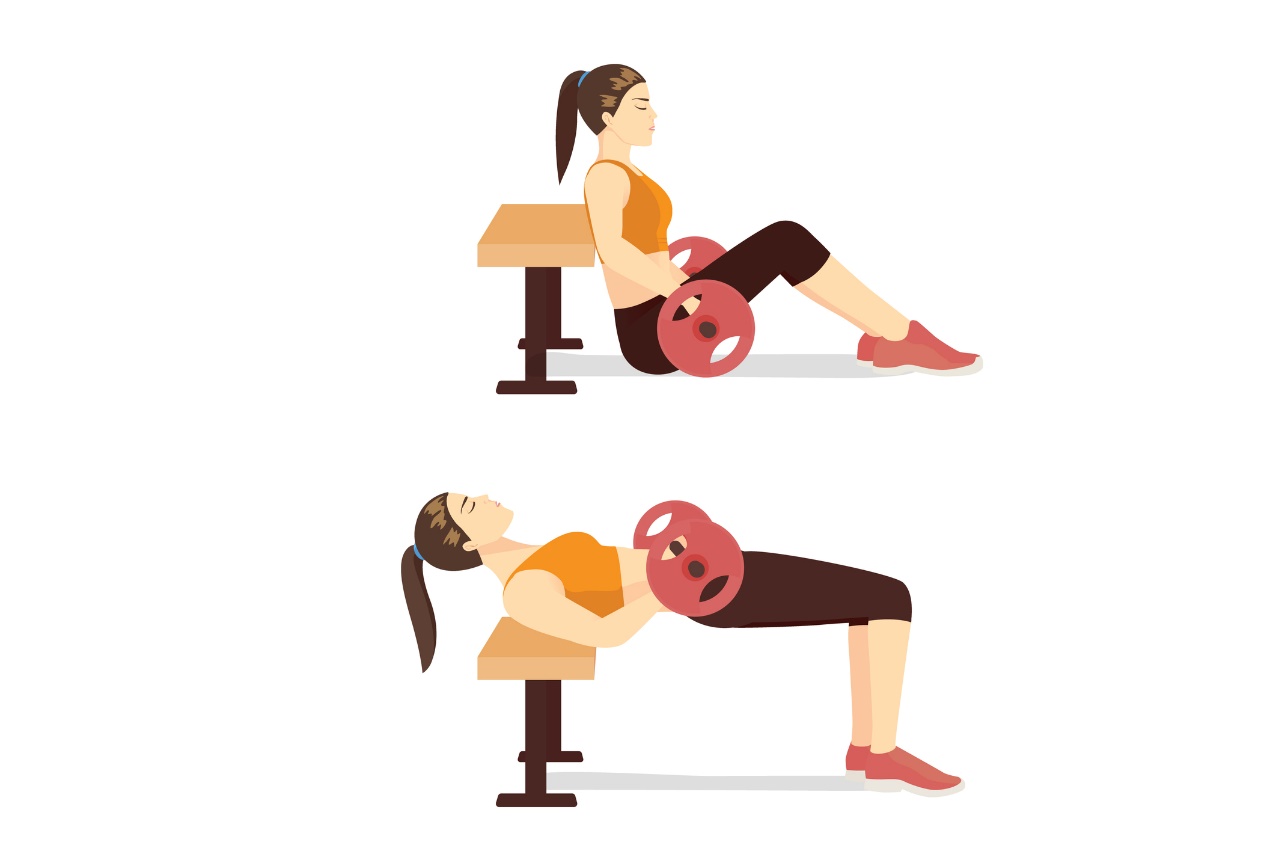
Building gluteal muscles
If you decide to strengthen your gluteal muscles (and any other muscles), it is advisable to stick to the basic rules. This will make the physical activity even more effective and will not carry any potential health risks.
From a complete and balanced diet, sufficient protein intake, regularity of training, correct technique of performing exercises to sufficient recovery of the body and quality sleep.
Tips for strength training effectiveness:
- Sufficient protein intake
- A regular balanced diet
- Regularity of physical activity
- Adequate muscle recovery
- Gradual unhurried weight gain
- Intake of necessary vitamins and minerals
Read also: Is plank more effective than crunches? How to practice it correctly?
Interesting resources










